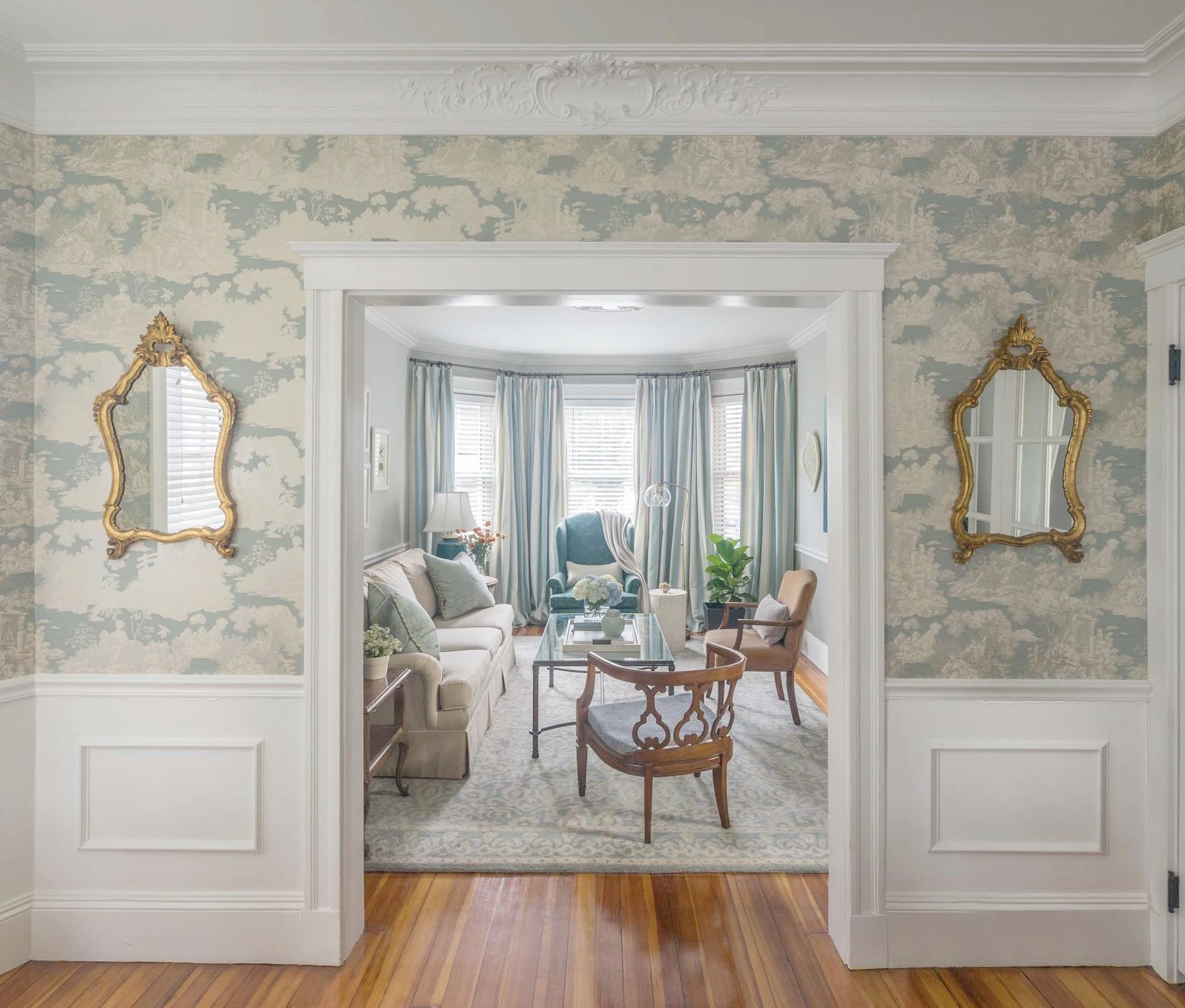A Classicist at Heart
“As much as I love the journey of discovery when building new homes, I truly revel in enriching the character of an older home--honoring the beauty, time, and place of the property,” Dane confides. “Striking the right balance between the provenance of a home and how we live today is a challenge I always welcome. Which relics of architecture should be preserved, thoughtful updates implemented, and what flaws and contradictions of the past will we do away with altogether.”
He doesn’t enlist antiques or relics just for the sake of using them in any project, but he prefers the infusion of classic elements in modern spaces as much as contemporary elements in traditional ones.
As a great majority of Dane’s work is found throughout the greater Washington, D.C., and greater Boston areas, many of the remodeling and interior design projects entail modernizing older housing stock. There are features in these homes that Dane greatly appreciates - exquisite moldings, millwork, built-ins, smaller jewel-box rooms, and stately staircases.
“The pandemic allowed people to better understand a trend I haven’t much followed as they realized that open-concept spaces don’t work for everyone. There is something to be said for privacy and separate space,” Dane says. “Often older homes have unique enclaves that can be preserved. I love the stories homes reveal as rooms unfold before us.
THE STORY OF THE HOME REFLECTS THE OWNERS
Enhancing the character of a home while also reflecting the personalities of the inhabitants is a challenge that Dane and his team relish. “In getting to know our clients, their tastes, and the lifestyle they envision, we find the story for their home, and poetry ensues,” Dane says. “Moreover, our environments impact our wellbeing. We are dedicated to designing spaces that bring beauty, balance, good health, peace of mind, and joy to our clients.”
“As designers, we are artists who use interiors as our canvases and our clients as our muse. It is a collaborative process incorporating members of the team, the homeowners, the neighborhood, house, and property itself,” he says.
Do we need to enlarge or add passageways for better connection and flow? How can we better blend indoors and outdoors with larger windows or doors? Older homes were built in eras when the technology for glass wasn’t as good as it is today, and therefore, there may have been fewer openings or opportunities to capture views. Heating and cooling were much different in the past, so there may be more fireplaces or radiators that require careful examination while retaining charming characteristics and satisfying the client. We take all of these components of the project into consideration when designing.
TRADITIONAL DOESN’T MEAN COLORLESS
One myth of traditional design is that it should be neutral or void of color. Dane points out that that sentiment is unrealistic as ancient civilizations in Egypt, Greece, Rome, India, and China incorporated a plethora of colors into their creations. “Consider the ochre and clay base of embellished pottery, painted marble statues, and buildings, or the rich jewel-toned fabrics,” Dane explains. “The paints and dyes came from nature itself and reflected the hues found in the earth, sea, and sky. People think that neutral tones - grays, beiges, and whites - belong in classic design, but any color can be neutral when used monochromatically.”
Dane advises his clients to welcome saturated colors in their homes whether through furnishings, wall treatments, window treatments, floor coverings, art, or accessories. “There are many ways to introduce color - especially favorite hues - into a design.” Over the years Dane has had clients who were unsure of using a particularly strong color come back later to say that it is their favorite element in a room. Working with professional interior designers and architects who are trained in the use of color, texture, proportion, balance, light, and scale can make all the difference in a new home build or remodeling project, especially in a historic setting.
“There is a beautiful give and take when working with older homes - a thoughtful synthesis of what was and what can be,” Dane says. “We are merely the custodians - the stewards - of classic design. I would shudder at the thought of tearing down an old house that could be enriched by renovating or unnecessarily removing older elements. Much of the craftsmanship of older buildings is a lost art. I simply prefer to celebrate it!”



